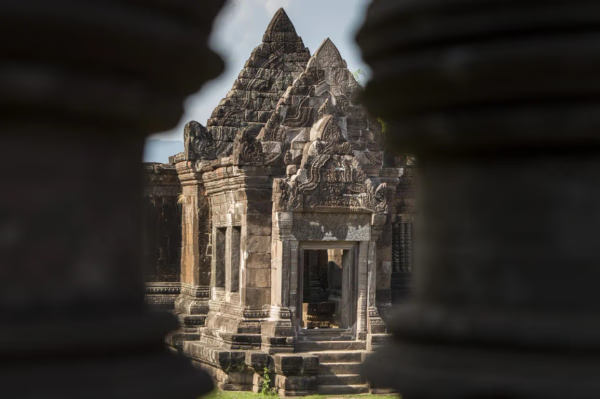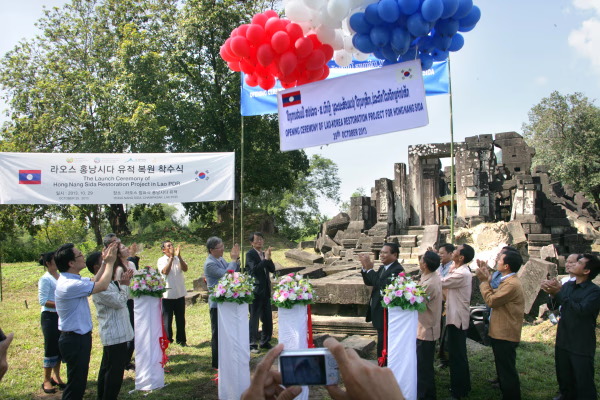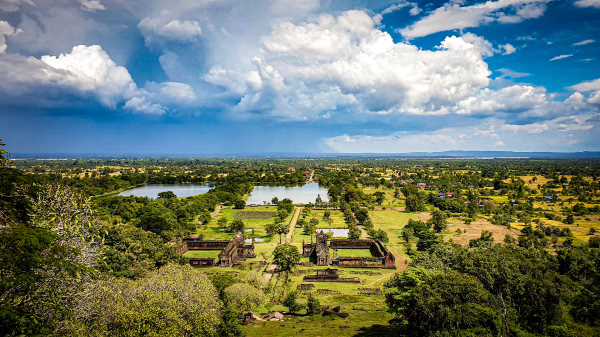
Online Exhibition of the Vat Phou Champasak Ruins and the Excavation of Hong Nang Sida
The National Heritage Promotion Agency
Published 2024.08.20 by 유다연
ອະທິບາຍ
The Vat Phou - Champasak site lies on fertile alluvial plains on the banks of the Mekong River, and its mountainous core is the eastern outlier of the Dângrêk Range, which is home to the Phou Kao Mountains that rise up to an altitude of 1,416 meters.
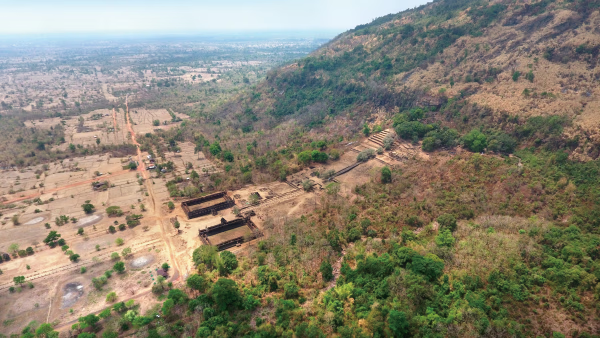
Vat Phou-Champasak
Vat Phou-Champasak is a UNESCO World Heritage site in southern Laos, renowned for its 12th-century temple complex dedicated to Shiva, with roots dating back to the ancient city of Linga-pura. The site, blending Hindu, Buddhist, and local beliefs, is set against the dramatic Phou Kao Mountain, integrating natural beauty with spiritual significance. Visitors are guided through a symbolic journey based on Hindu cosmology, with the site’s architecture and carvings reflecting the grandeur of the Khmer Empire. Beyond the main temple, the cultural landscape includes ancient roads, smaller temples, and the Hermit's Forest, offering a deep dive into history and spirituality. Nearby Champasak Town, with its historical blend of Buddhist temples and French colonial buildings, serves as a convenient base for exploration. A visit to Vat Phou-Champasak is an immersive experience in the cultural and spiritual heritage of Laos, making it a must-see for history and culture enthusiasts.
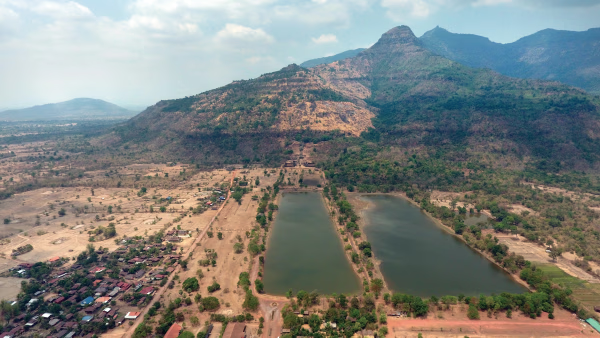
Lingaparvata(Phou Khao)
Lingaparvata, also known as Phou Khao in Laos, is a sacred mountain revered as a Svayambhu-linga, a naturally occurring symbol of the Hindu god Shiva. This mountain, standing at 1,416 meters with a 10-meter-high outcrop, has been a significant religious site for centuries, attracting pilgrims, including Khmer kings and Hindu saints. The mountain was likely worshipped as the Axis Mundi, the symbolic center of the Khmer Empire. Inscriptions found in the area reveal early Sanskrit and Tamil cultural influences in southern Laos, dating back to before 450 CE, providing valuable insights into the region's historical and cultural heritage. Visitors to the Vat Phou site can explore these rich connections through the Devanika Inscription.

The Hong Nang Sida Temple, also known as the Temple of Princess Nang Sida, was likely the main sanctuary of the ancient city of Linga-pura, built around the 12th century. Its shikhara (tower) and roof have collapsed, but the ritual hall is still used for local ceremonies. According to legend, Princess Sida sacrificed herself to save her kingdom but was rescued by Prince Katthanam, leading to the temple's construction in her honor. The temple symbolizes themes of sacrifice, bravery, and loyalty central to Khmer culture, and its ruins reflect the historical importance of monumental religious structures intertwined with local myths.
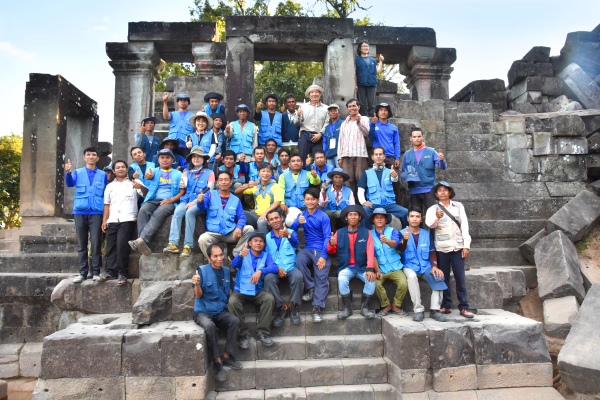
Since 2013, the Cultural Heritage Administration and the Korea Cultural Heritage Foundation have been restoring the Hong Nang Sida Temple, also known as the "Temple of Princess Sida," at the World Heritage Site in Champasak, Laos. This 12th-century temple, once an important site during the Khmer Empire, had fallen into ruin, but thanks to the efforts of the Korean research team, it is gradually being restored to its original form.

This project is part of a broader effort to build capacity in the heritage sector in Laos through joint research, technical training, and educational exchanges with South Korea. During the restoration, several significant artifacts, including a gilt-bronze yoni—a symbolic representation of female divine energy—and various votive objects were discovered. These findings have deepened the understanding of the site's historical and religious significance and have sparked increased interest in the cultural legacy of the Khmer Empire, both in Laos and internationally. The discoveries have also highlighted the importance of preserving the region's rich cultural heritage for future generations.
ບົດທີ
ການນິດສະການທີ່ກ່ຽວຂ້ອງ
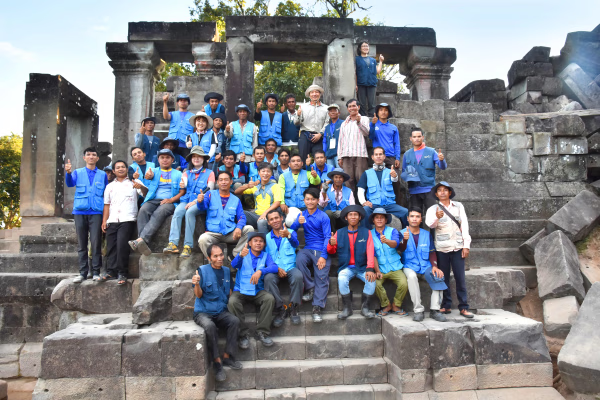
Natural History
Lao-Korea Cooperation Project : Hong Nang Sida Temple
Since 2013, the Cultural Heritage Administration and the Korea Cultural Heritage Foundation have been working on a heritage restoration project at the World Heritage Site “Vat Phou and Associated Ancient Settlements within the Champasak Cultural Landscape” in Lao PDR. The project focuses on restoring the collapsed stone structure called Hong Nang Sida, located in the southern part of the Vat Phou Temple Complex. This site, also known as the “Temple of Princess Sida,” is gradually regaining its original appearance thanks to the ongoing restoration efforts by a Korean research team.
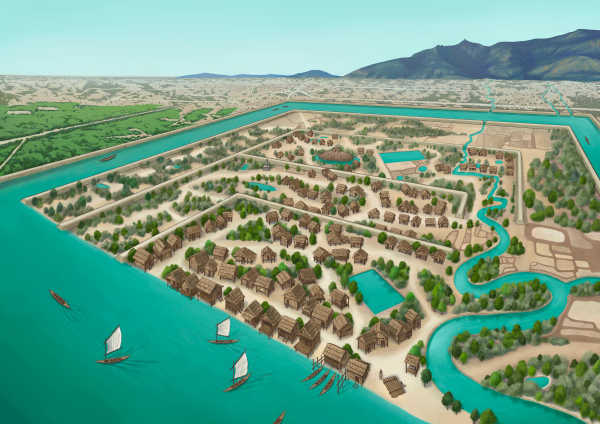
Natural History
Sacred River
The archaeological site of the ancient city is situated on the plains adjacent to the Mekong River. The city was surrounded by two layers of brick and earthen ramparts, with a moat in between. These ramparts measured approximately 2.4 km from north to south and 1.8 km from east to west, with the best-preserved sections standing up to 6 meters high and 14 meters thick. The walls and moats were likely constructed to manage and utilize the waters from the Phou Kao Mountains' tributaries.
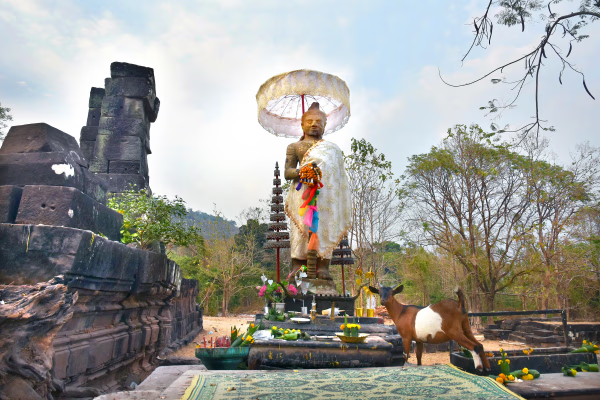
Natural History
Vat Phou-Champasak Site Exploration Itinerary
The pilgrimage journey from the World of Humans to the World of Saints, the World of Gods, and the World of Emptiness

